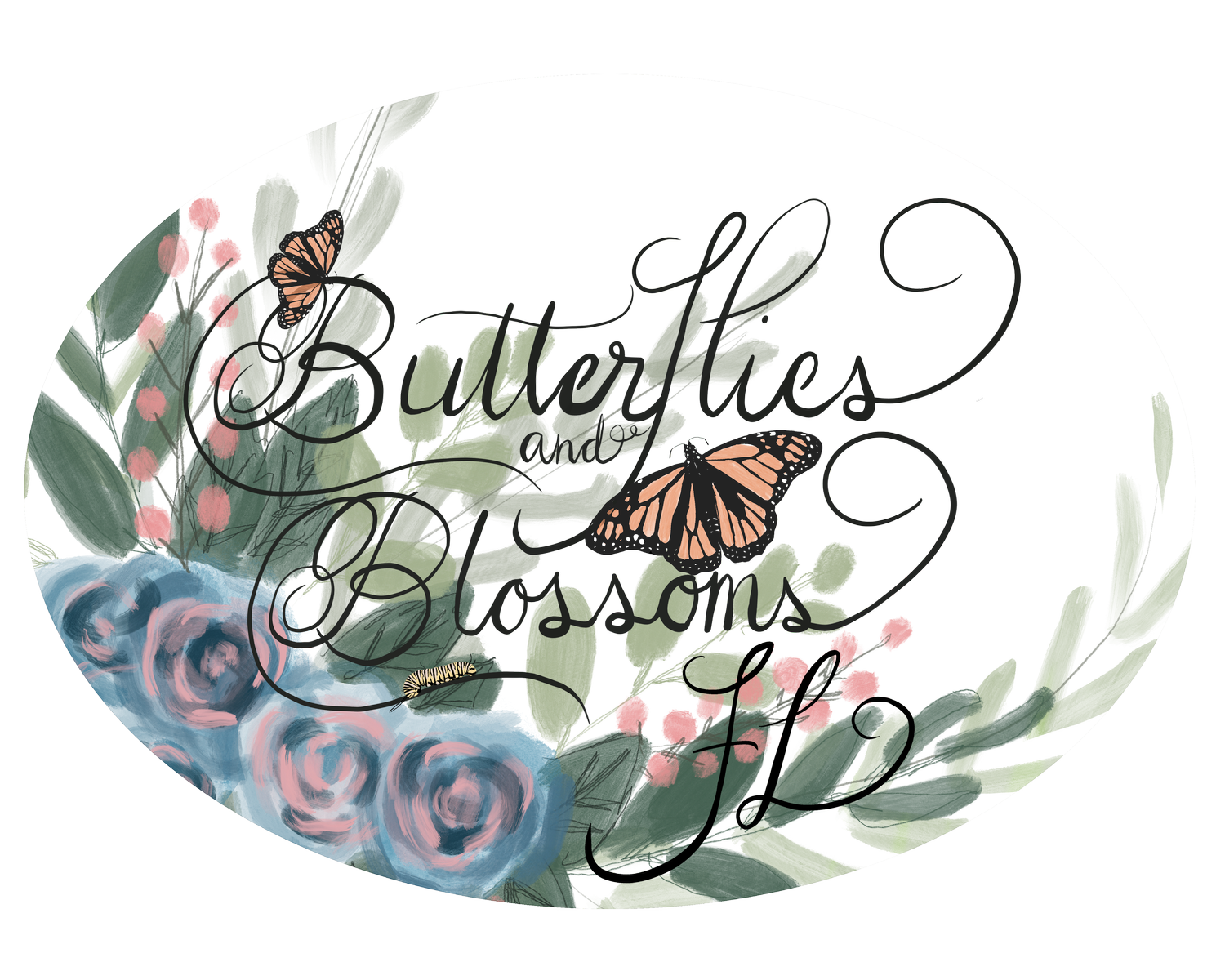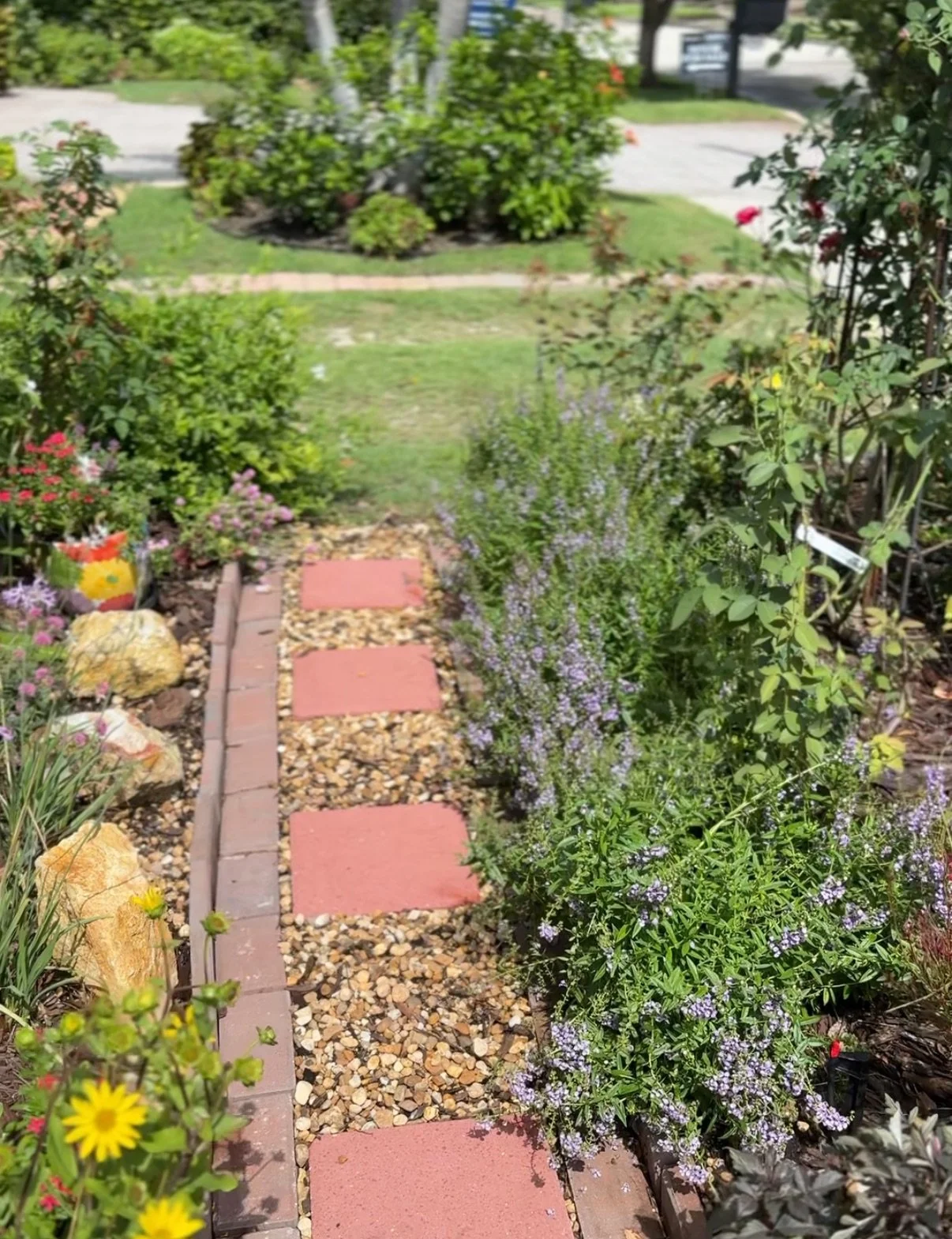Diary of a Gardener - To Mulch or Not to Mulch... and Rock? That Is the Question.
To Mulch or Not to Mulch... and Rock? That Is the Question.
As a landscape designer and garden consultant, one of the questions I get asked most often is:
"What kind of mulch should I use—and should I use rock instead?"
Ultimately, the choice is yours. But as someone who specializes in Florida landscapes and is a Florida-Friendly Landscaping™ certified professional, I like to give my clients all the facts to make an informed decision—with maybe a little nudge from me.
Mulch: What Kind? How Much? Where Do I Buy?
There are pros and cons to every type of mulch, so let’s break it down. But first, let’s talk about the big no-no: rubber mulch.
Rubber Mulch: Just Don’t.
Not organic – It does nothing to nourish the soil.
Leaches chemicals – Over time, toxins seep into the soil and eventually our waterways.
Holds heat – Florida is already hot. Rubber mulch only makes it worse for your plants.
Harms beneficial insects – It can disrupt the natural balance of your garden.
Highly flammable – And yes, that matters.
Expensive – High upfront cost and difficult to remove.
Doesn’t last – Despite the claims, it breaks down and becomes unsightly.
If not rubber, then what?
Better Mulch Options (My Top Picks)
FloraMulch
Made from invasive Melaleuca trees harvested from the Everglades, FloraMulch is sustainable, Florida-made, and widely distributed throughout the state.
Pros: Eco-friendly, locally made.
Cons: Doesn’t retain color long and breaks down faster than others. Slightly more expensive.
Pine Bark
Organic, not dyed, with larger chunks that break down slowly.
Pros: Long-lasting, clean look.
Cons: Can float away during heavy rains if not contained.
Pine Straw
Lightweight, easy to work with, and great for wildflower, cutting, and rose gardens.
Pros: Budget-friendly and breathable.
Cons: Needs frequent topping off.
Cocoa Brown Mulch (undeyed if possible)
Aesthetically pleasing, but if dyed, use caution.
Pros: Decorative appeal.
Cons: Often dyed, and color fades.
⚠️ Cypress Mulch
While still sold, I don't recommend it. Harvesting cypress trees—many from sensitive wetland areas—is not sustainable.
🛑 A Note About All Mulch:
No matter what you choose, all mulch:
Breaks down over time.
Fades in color (especially in Florida sun).
Needs to be top-dressed regularly to keep beds fresh.
Can carry Chinese Crown Orchid, a highly invasive species.
Can be purchased in bulk or bags.
Helps suppress weeds, retain moisture, and nourish soil—all major wins.
If you’re looking to save money, local tree trimmers sometimes offer free mulch deliveries. Just know: you won’t get to choose what you get or when it arrives, and you’ll need to do the heavy lifting yourself.
Rock in Landscaping: Pretty but Problematic
Who doesn’t love the look of a rock bed? White marble, river rock, or pea gravel can be stunning—but before you go full-stone, here’s what you should know:
Not Florida-Friendly Landscaping™ approved.
Super hot – Rocks retain and radiate heat, which can stress or even cook your plants.
Not ideal for our humidity – Xeriscaping (rock-heavy landscaping) works better in dry, arid climates like the Southwest, not in Florida’s subtropics.
Weed cloth issues – Often paired with rock, weed fabric:
Makes it hard to dig or plant.
Doesn't prevent airborne seeds from germinating.
Traps weeds above the cloth—making them harder to pull.
Weed magnets – All those little spaces between rocks are perfect for weed seeds.
Maintenance nightmare – Weeding is tough, and eventually you’ll need to remove or top up the rock. Not fun.
Costly – Rock costs around $160–$260 per yard, and you’ll need multiple yards. Plus, it’s heavy, increasing installation labor.
So What Do I Recommend?
If you ask me—and you are paying for my advice, after all!—here’s what I’d suggest:
Use rock as:
A border between garden beds and turf.
A decorative dry creek bed or drainage solution.
A pathway, separated by edging.
But when it comes to your plant beds, I’ll always advocate for organic mulch over rock—for the sake of your plants, your budget, your back, and Florida’s fragile ecosystem.
Final Thought
At the end of the day, your landscape is yours to enjoy. My job is to help you make informed decisions so you can create something beautiful that also works with nature, not against it.
Remember to always keep growing. 🌿

